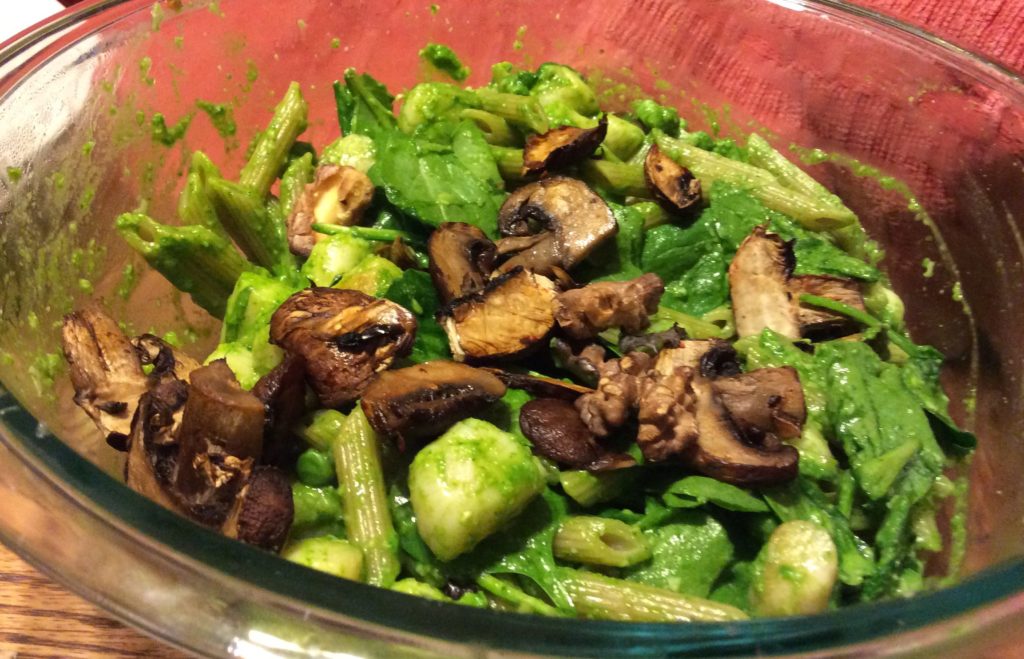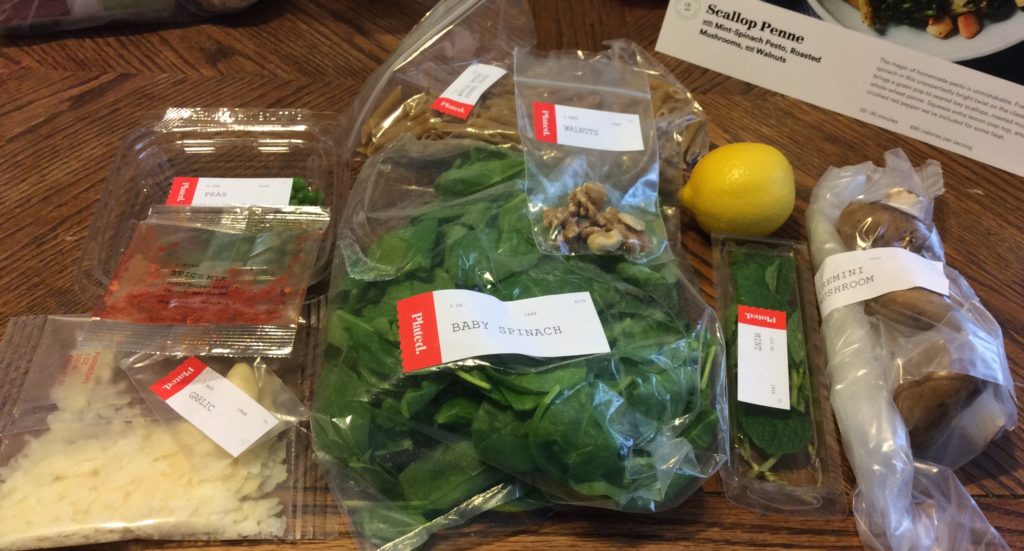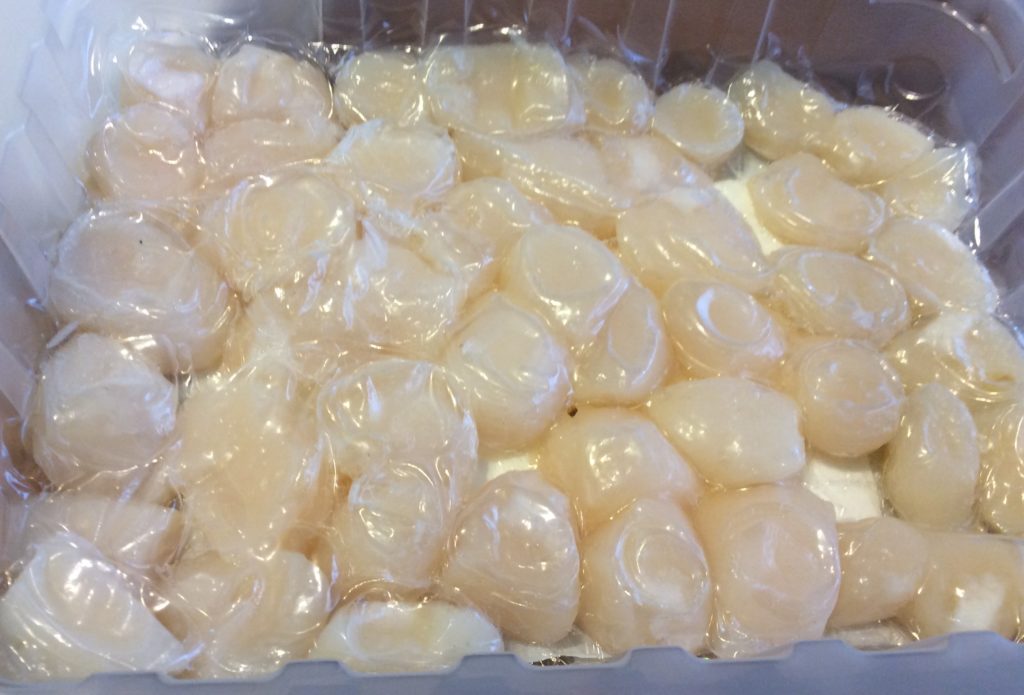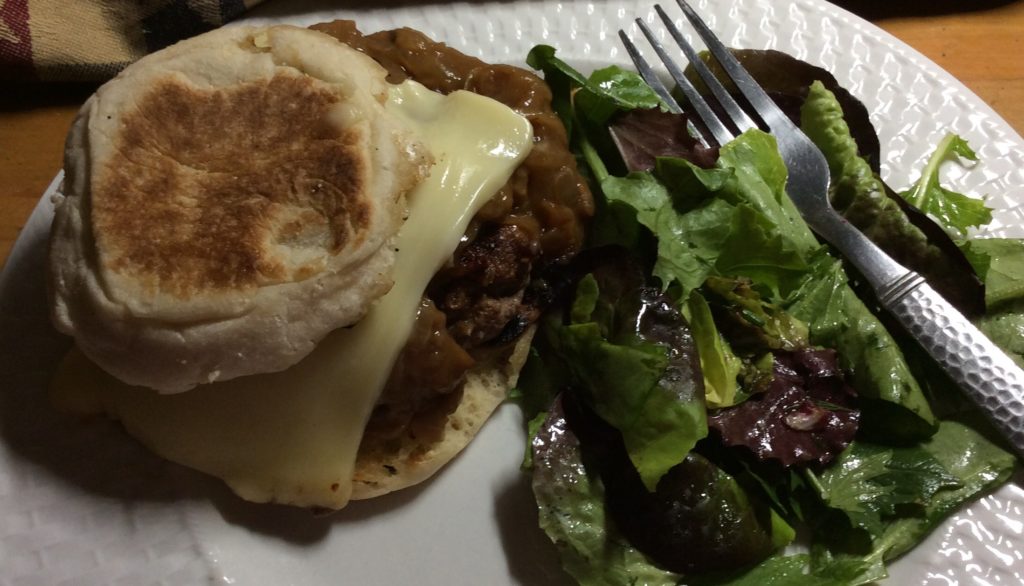For years, I had been avoiding meal kits. I’d get coupons for HelloFresh in the boxes of online orders for all sorts of products or hear my friend rave about the cool Blue Apron meal that awaited her at home, and I’d just shake my head. To me, the idea of meal kits made no sense. At a cost of $10-$12 per person, per meal, meal kits rival the cost of take out but you have to go through the trouble of making the meal yourself. Plus unlike take out, meal kits portions are measured so you won’t have leftovers. Financially, I figured, I got more bang from my money from ordering out and with less mess.
Meal kits, moreover, seemed to be the culinary equivalent of painting by numbers: you end up with something that may be nice but you put no creativity into it (though then again, 99% of my cooking means following a recipe, so what creativity do I ever use?). Moreover, I worried the meals would not be that tasty and that the portions would not be large enough to satisfy us.
But I’ve been in a huge cooking rut. I got to the “H” in my international cooking project and I’ve been left with a lot of cuisines that have just not been inspiring me or that require me to hunt for ingredients that are problematic in the first place (pork belly, anyone?). Moreover, I live with four people with very different diets: a vegan, an uber-picky tween, a low-carb eater and me, who hates vegetables. Forget cooking a meal that the four of us can eat, I can rarely cook something that will satisfy three of us! So rather than cook, we’ve been eating a lot of frozen food and take out. Both horrible options for our taste buds and/or our wallet. I was ripe for something else.
A few weeks ago, I was doing an online order for Safeway – our local supermarket – when I came across their listings for Plated meal kits. They had four that I could get as part of my deliver order, with no commitment to a subscription and with no shipping charges. I figured I’d give it a try and wow, it was a revelation. The meal was fun to prepare and I did enough of the work (albeit following detailed instructions) that, at the end, I had the same type of satisfaction as when I cook a meal from a recipe I chose and shopped for myself. The psychology involved reminds me of the story of how boxed cake mixes only took off after marketers began suggesting that cooks add eggs and other elements to make them their own. And the results were great. The portion was perfectly sized, the ingredients seemed high quality (unlike what I’m sure the cheap restaurants I order from use), and the results were very tasty. I wanted more.
And that’s when I remembered those HelloFresh coupons I still had around. I figured I’d start with them and then give other meal kit services a try and see what they really have to offer and how do they compare to one another. Some of these companies also offer their recipes online, I will be cooking some of these both to get a greater sense for what each company offers without breaking the bank and to get a sense of just how good or bad of a deal the kits are versus shopping for the ingredients yourself.
I hope you’ll come along in this journey and leave comments of your own experiences with these services – and these recipes.
Meal Kits Subscriptions Reviewed So Far
How Meal Kit Subscriptions Work
While you can now find individual meal kits at supermarkets (Safeway & Albertson’s sell Plated, Walmart sells their own, Gobble and other ones, Kroger sells Home Chef), most people get meal kits by subscribing to one of many services. Of these, Blue Apron is the largest one in the US, will HelloFresh, a German company that operates in several countries, following it. There are currently dozens of meal kit companies, some specializing in particular diets or regions.
A standard meal kit subscription is for a weekly box containing three meal kits, each for two adults. Some subscription services allow you to order fewer meal kits a week, while others let you order more. Some subscription services also have kits that feed three or four people. When you subscribe, you usually chose the “plan” you prefer.
What are Your Meal Choices? Can You Chose What Meals You Get?
Most meal kit companies offer contemporary American food, though I’ll be exploring the meal choice differences between companies. Some companies offer vegetarian or even vegan options and some even specialize in this fare. Some have specific plans for specific diets such as paleo and keto.
Most subscription services put up a list of the meal kit options you have every week and allow you to select the ones you want. You usually have a deadline of 5 to 7 days before you receive the meal to make your choices. If you don’t make it, many of these services will just send you their own choices.
If you don’t like any meal options for a week or you’ll be out of town, you can simply suspend your shipments for that week – and you can even do that for multiple weeks in advance -, as long as you remember to do it before the deadline.
What Do You Get in a Meal Kit?
Meal kits come with most of the ingredients you need to make the meal you select in the precise amounts called for by the recipe. For example, the HelloFresh meal kit for Sweet ‘N’ Smoky Pork Chops with Apple Carrot Slaw, Mashed Potatoes, and Cherry Sauce came with a sealed package with 2 boneless pork chops, 2 scallions, a handful of small gold potatoes, an apple, little jars with jam and mayo, a little bottle with vinegar, a small plastic packet with a spice mix, a tiny sachet with sour cream and a sealed plastic bag with shredded carrots.
Some meal kits offer fewer ingredients – for example Dinnerly says they keep their meals cheap by only having 5 ingredients in them.
The meals usually call for but do not include staples such as salt/Kosher salt, pepper, butter and oil/olive oil.
The meal kits and recipes I’ve tried so far include a main dish and one or two side dishes – usually a starch and a vegetable.
How Much Do Meal Kits Cost?
Meal kits costs vary by company. At the bottom of the barrel, you have Dinnerly and Every Plate, which offer 3 weekly meals for 2 for $39 ($6.50 per person, per meal) includding shipping costs. Both companies get very iffy reviews, but I will assess them myself later in this project.
In the middle, companies like Blue Apron, HelloFresh, Home Chef and Marley Spoon charge $60-$65 ($10-11 per person/per meal) for the same 3-meals-for-2-people standard subscription.
And at the top, you have companies like Plated, Sun Basket, Gobble and Green Chef offering the standard 3-kits-for-2-people deal for $72 to $84 ($12-14 per person/per meal).
Some companies have premiums on special meals (e.g. HelloFresh will charge $12 more for “gourmet” meals) and most of the larger companies have special deals heavily discounting your first week of meals. I will be taking advantage of these discounts in doing my reviews of meal kits.
In addition, companies that offer the two meal kits a week option usually charge more for these, and companies that offer meal kits for more than 2 people have a lower per-person cost in these.
Are Meal Kits A Good Value?
This is one of the questions that I will be exploring in this project. In addition to buying and making meal kits, I’ll be “hacking” meal kit recipes by making them with my own ingredients and comparing how much money I’ve spent on them. Of course, you can’t buy a single celery rib or a tablespoon of sour cream, so in evaluating my cost I will consider the total cost of whatever I had to buy to make the meal – and exclude the cost of any item I already had at home.
So far, I’ve made five meals from meal kit recipes at an out of pocket cost of $2.75 to $7.50 per person/per meal, and total cost of $5.50 to $18.50 per meal (I increased some of these recipes to feed 3 or 4 people).
My costs, however, reflect the actual ingredients I bought. Some may be of lower quality than the ones sent by the meal kit companies. Some of these companies specialize in sending organic produce and free range meats that I may not be able to find at my local discount or regular grocery stores. Moreover, some of these companies send gourmet items such as demi-glace which I’d have to special order (and will in this particular case for future meals).
And the total cost of the meal does not account for the time shopping for the ingredients or correctly portioning them for each meal. Time is money, after all, and most people do not enjoy spending it grocery shopping. Do bear in mind how much you like or dislike to shop and what else you could be doing with your time while evaluating the actual costs of these meal kits.
How Long Does It Take To Prepare a Meal from a Kit?
Meal Kit companies usually give you an estimate of how long it’ll take you to make a meal from their kits, usually ranging from 15 minutes to an hour. While I haven’t done this yet, for future meals I will measure how long it actually takes me. This is more complicated than it sounds, because I seldom *just* make a meal – rather I alternate the steps of making meals with other tasks around the house. But I’ll try.
What Are the Instructions Like?
All kits come with instructions. Cheaper kits require you to download them and either print them or follow them from your internet device. More expensive kits come with printed cards or a magazine with all the recipes for that week’s kits. Most have step by step instructions, some of which are illustrated. I’ve found the illustrations helpful specially when trying to determine how to cut vegetables.
The instructions for these meal kits help you maximize your time by intercepting the steps you need to follow to make the main dish and any accompanying side dishes or sauces. I’ve found this particularly valuable.
What Equipment Do You Need?
The meal kits I’ve used assume that you have a fully stocked kitchen as far a cookware goes, though some provide alternatives in case you don’t (e.g. use a spoon to mash potatoes if you don’t have a masher). Though some of these recipes try to minimize the number of dishes you use, they are not always successful. I’ve found myself having to wash as many pots and implements following these kits as I’d normally have to wash, if not more.
How do Meals Taste?
This is another question that I’ll aim to answer in this project. So far, I’ve cooked eight meals from meal kits and five more from meal kit recipes using my own ingredients. All the meat-based meals have been good to great. The vegan meals I’ve cooked have been merely OK. But it’s early in the project.
What is Good About Meal Kits?
For me, it’s the fact that many of the meal kits I’ve tried include not only a main dish (which is often rather simple), but also one or two side dishes and that the chef behind them has done the required planning so that all you have to do is follow the steps in the recipe.
Moreover, the kits include all the ingredients you need for the meal so you don’t have to worry, when you menu plan, that your local grocery store may be out of one.
Finally, there is no food waste.
What is Bad About Meal Kits?
They generate a lot of garbage. While some of it is recyclable (e.g. the boxes and some of the little bottles and jars), the frozen gel packs are not and they are just being accumulated in landfills. Moreover, many of the veggies come in plastic bags which are not really recyclable either – of course, this is also true of the packaged produce you buy at the supermarket. While the meal kits bought at the supermarket also have a lot of plastic packaging, at least they don’t require these non-recyclable gel packs, so they may be a better option environmentally.
The meal kits are also pretty expensive, specially if you have to feed a whole family. And there are no leftovers – which means that the effort you put into preparing a meal feeds you just once.
Do you have any questions? Leave them below.





